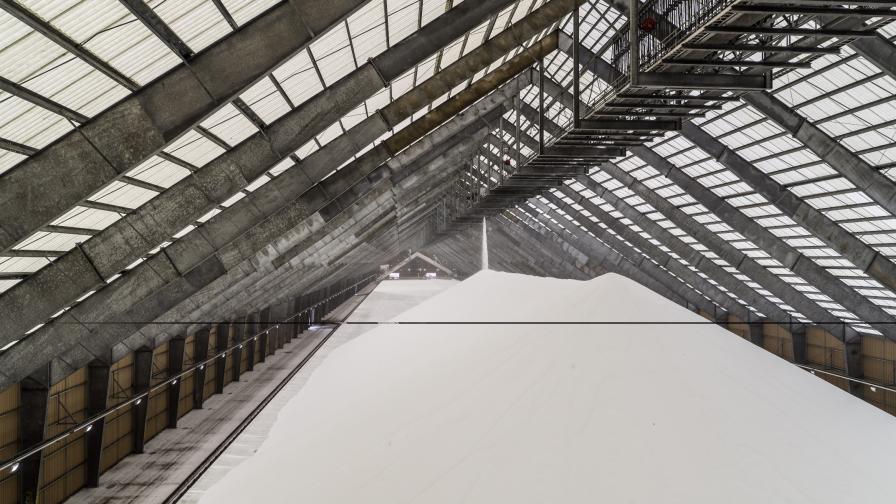Global Nitrogen Outlook: Top 4 Market Themes to Watch in 2020

There are tremendous opportunities ahead in 2020 as the entire nitrogen fertilizer supply chain moves away from the challenges of 2019, according to CF Industries’ Bert Frost.
Last year was one of extremes for the nitrogen value chain. Most prominent was the extreme difficulty that many farmers faced due to terrible weather in both spring and fall.
Having grown up in a farming community and raised in a family rooted in agriculture, I believe the conditions faced by North American farmers in 2019 were among the toughest I’ve seen in my lifetime. Historic flooding in the spring disrupted planting, applications, and the actual transportation of fertilizer in many parts of the U.S. Poor conditions in the fall disrupted harvest and prevented fall ammonia applications in some areas.
At the other end of the nitrogen value chain, the global nitrogen market saw unusual stability for global prices.
No two years are the same, and the factors that drove the extremes we saw in 2019 can just as easily reverse in 2020 — many times. Nitrogen fertilizer is subject to many global dynamics that are volatile in their own ways. These are the themes we are focused on for 2020:
Global Energy Prices
Energy — whether natural gas or coal — is the largest input cost in nitrogen manufacturing. A significant factor in the stability of global nitrogen prices in 2019 was lower global energy costs compared to 2018. With global energy prices lower, marginal (i.e., the highest-cost) producers faced less profitability pressure and were able to operate at higher rates than the previous year.
Near the end of each year, our company, CF Industries, publishes its global nitrogen cost curve — an estimated range for the average monthly price per ton of granular urea at the U.S. Gulf, based primarily on energy price forecasts for natural gas, liquefied natural gas, and coal for the following year. The estimate that we developed for 2020 shows a range that is almost identical to the actual price range in 2019, which is why we expect global nitrogen prices in 2020 to be similar to 2019. It is important to note, of course, that energy prices can move unexpectedly up or down, which will affect how actual prices in 2020 will develop.
I-B-Cs of Global Supply, Demand
We continue to expect the global nitrogen supply and demand balance to tighten through 2021, at least. Over these next several years, demand growth should outpace net global capacity additions. Because it takes roughly four years to construct an ammonia-urea complex, it is unlikely that additional plants will come online during this time period, beyond what is already visibly under construction.
Without significant new nitrogen capacity entering the global market in the near-term, what is happening in three countries — India, Brazil, and China — will determine industry sentiment for much of the year.
From a demand perspective, India and South America (led by Brazil) are the largest urea-importing regions in the world. Each imports more urea than North America.
India’s tender process, in which government entities request bids for large quantities of urea a limited number of times per year, will ensure that India’s role in global urea prices remains outsized. When India is purchasing, global prices tend to be higher. When the country is not, suppliers to India have to find different outlets for their product, which typically causes prices to drop.
Brazil, in contrast, will import nitrogen throughout the year, although, much like North America, it will import more to meet demand in its fertilizer application season.
Through the end of 2019, positive demand pull from both countries supported global prices. India, in particular, had strong growing conditions this year due to a good monsoon season, which led to greater demand for urea from its farmers. These two countries will again play an outsize role in global demand indications during 2020.
China played a greater role in supplying the global nitrogen market in 2019 than many anticipated. Positive global demand required additional tons from marginal producers in China to be bid in to the market — which those producers were able to supply due to lower energy costs compared to the year before. However, we continue to expect that, in the longer-term, China will continue to move toward a self-sustaining urea production level and supply spot export tonnage from those plants that were built for export.
North American Logistics
Looking ahead to spring, we continue to anticipate strong corn plantings in the U.S. The current soybean-to-corn futures ratio supports higher U.S. corn plantings in 2020 and is comparable to last year’s ratio at this time. The stocks-to-use ratio is an important metric to determine demand for agriculture commodities and forecast the next year’s acreage. With the lowest corn stocks-to-use ratio (11.5%) since 2013, CF Industries expects an increase in planted corn acres in 2020.
While this will support good nitrogen fertilizer demand in 2020, the concern we hear the most is about the logistics of moving fertilizer to retailers and end users.
The past two spring application seasons have seen the transportation and distribution system strained due to weather. In 2018 a short application season stressed the fertilizer supply chain as more tons were moved in a smaller window than expected. In 2019 historic flooding disrupted barge traffic and even rail transportation in some parts of the U.S. In some instances, this resulted in product unable to move from ports to farms in time.
Companies like CF Industries pre-position as much product as possible at our distribution terminals so we are ready when demand appears. Our advice to purchasers of our product is to plan ahead as much as possible and talk to your retailer to cover at least a portion of your fertilizer position in advance. We hope, like you undoubtedly do, that the weather is much more favorable this year for transportation and applications. As we’ve seen, unfortunately, there are always challenges to be overcome, both expected — such as 2020 being the first application season without the Magellan ammonia pipeline that supplied many ammonia terminals in the western corn belt — and unexpected.
Soil Health and Nutrient Stewardship
While the themes I discussed here are very much focused on 2020, there is an additional theme for the long-term that is gaining importance not just in our industry but the world at large: soil health and nutrient stewardship.
Improved farming practices along with seeds and fertilizer have transformed the world’s ability to feed its people. CF Industries is proud to be a part of this vital effort and to have our product used primarily by the best farmers in the world on the best farmland in the world. At the same time, we hear the call to continue to focus on the long-term health of our environment.
One such way we are doing this is through a partnership in Iowa with The Nature Conservancy called 4R Plus, which is designed to increase awareness and understanding among Iowa’s farmers and crop advisers of two important farming practices: 4R Nutrient Stewardship and conservation. 4R Nutrient Stewardship refers to the concept of applying the right nutrient source at the right rate, right time, and right place. The “Plus” in 4R Plus refers to a suite of in-field and edge-of-field conservation practices that increase soil resiliency and help to keep nutrients on fields and out of adjacent water bodies.
We are proud of this effort and impressed by the many stories farmers share about how adopting 4R Plus practices have not only improved soil health and water quality but also increased their yields and bottom lines. It’s a program and approach we hope will be adopted more widely as the years go on.
We believe there are tremendous opportunities ahead in 2020 as the entire nitrogen fertilizer supply chain moves away from the challenges of 2019. As we’ve seen in recent years, whether it is energy prices, weather, or something else entirely, we will have to adjust to changing dynamics during the year. We believe fertilizer producers are well prepared for whatever arises and ready to meet demand when and where it develops.






